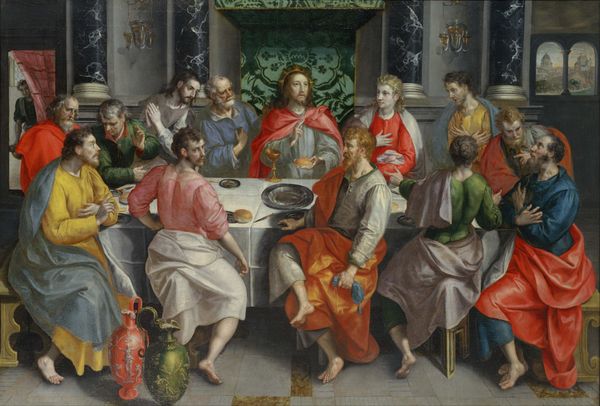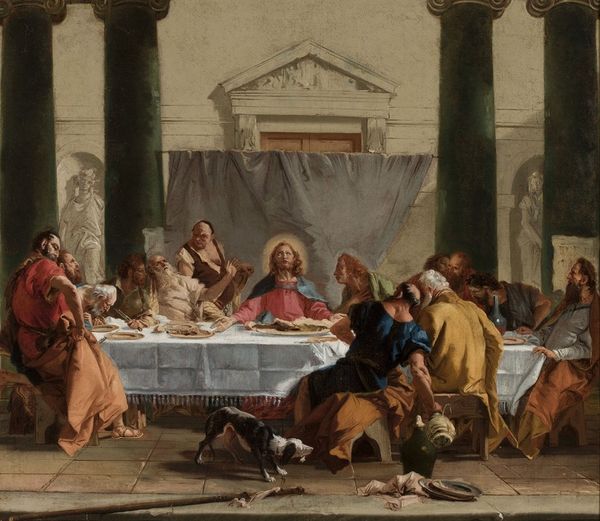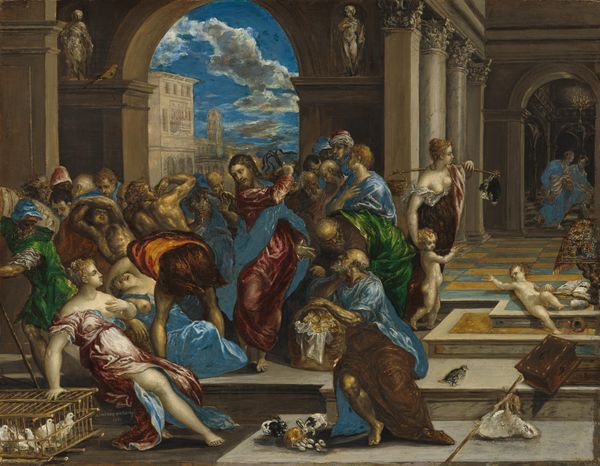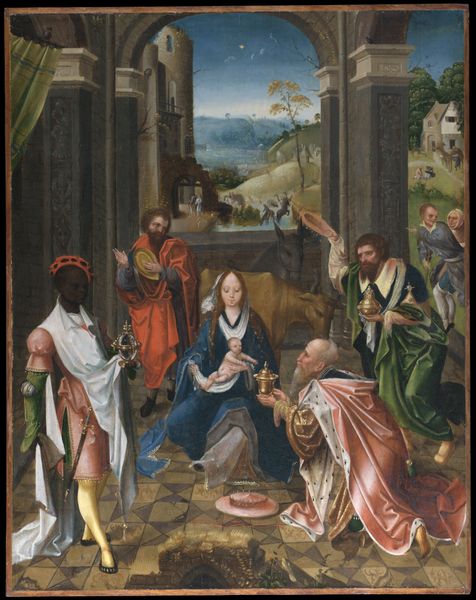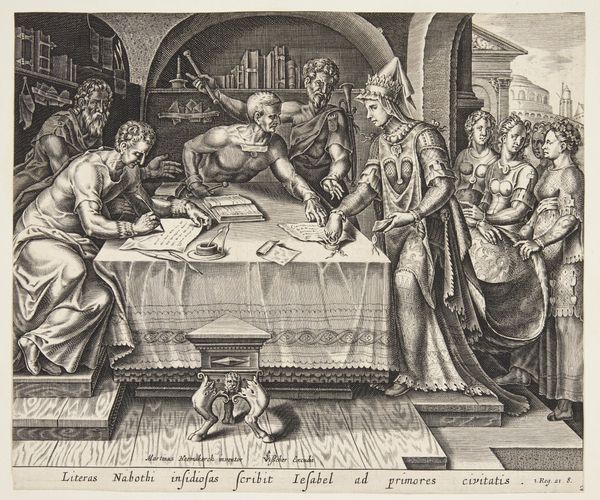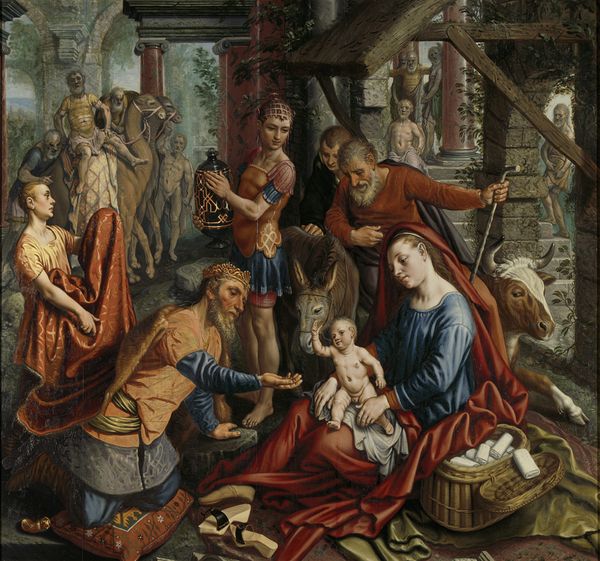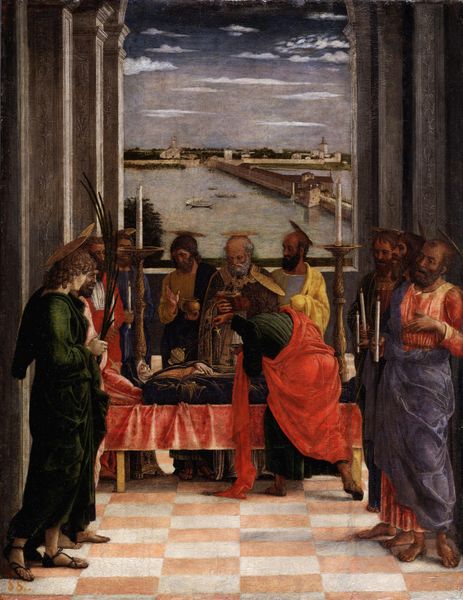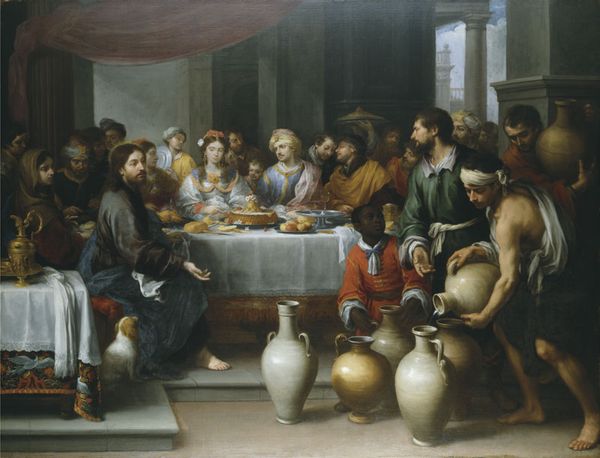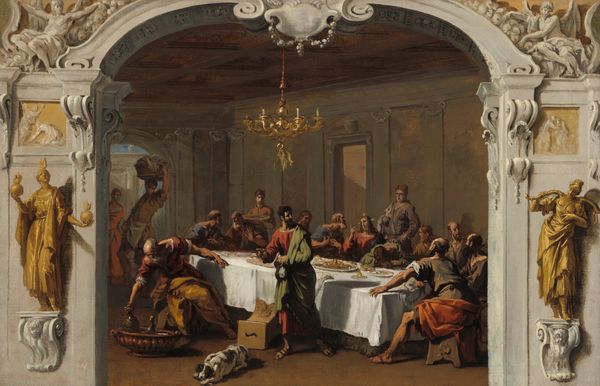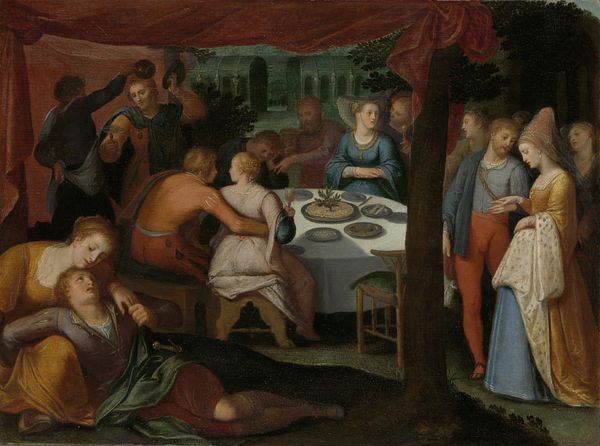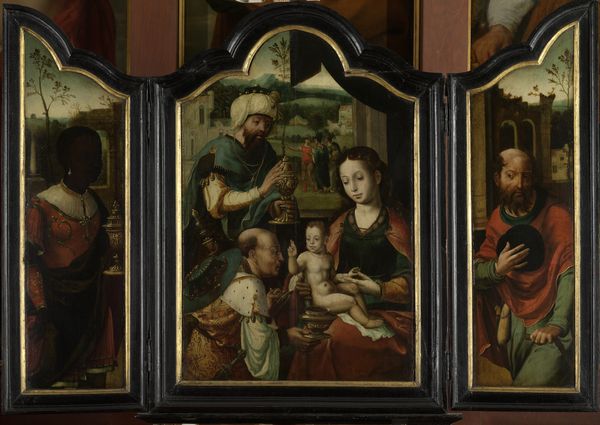
painting, oil-paint
#
narrative-art
#
painting
#
oil-paint
#
sculpture
#
mannerism
#
genre-painting
#
italian-renaissance
Copyright: Public domain
Curator: Pieter Aertsen painted this piece, "Christ in the House of Martha and Mary," in 1553 using oil paints. It is such a curious construction of imagery. Editor: My initial reaction is complete overwhelm, and perhaps a bit of amusement! So much detail, especially in the foreground—it feels like a chaotic still life crashing a religious scene. Curator: That clash is intentional, I think. Aertsen’s clever arrangement emphasizes the tension between spiritual devotion and daily toil. Note how the abundant provisions draw your eye. Editor: Absolutely. The materiality is impossible to ignore. That pile of cheeses! The herbs! Even that plucked fowl has such a painterly quality to it, its almost unsettling realism brings the mundane right into the sacred space. Curator: The marketplace items mirror labor but contrast the traditional hierarchy where religious subject matter held greater artistic value. By inverting it, he draws consideration to those traditionally invisible laborers who sustain life. Editor: I see what you mean about turning the hierarchy upside down. It feels almost like a subversive act—like the artist is winking at us. I get the sense of labor as active meditation. There is devotion in tending to those mundane details, a quality these workers possess despite their societal roles. Curator: Indeed. Furthermore, looking closer, elements in the background hint at narrative painting traditions through representing Christ and Martha, so Aertsen intertwines multiple painting categories that comments on consumerism and its entanglement in spiritual experience. Editor: Right, the background almost seems to mock typical religious scenes. Very clever how all these common threads unite labor, spirituality and their relationship to the artistic value of work through simple goods and produce. Its so much food, and so many objects to enjoy, the viewer has almost everything they could ever ask for right in the foreground. Curator: That subversion also draws out the spiritual themes implicit in labor, by reasserting them, which I find a particularly subtle but very clever touch on Aertsen's part. Editor: It’s like Aertsen invites us to re-evaluate what constitutes worth. Beautiful stuff to reflect on while we’re here.
Comments
No comments
Be the first to comment and join the conversation on the ultimate creative platform.
